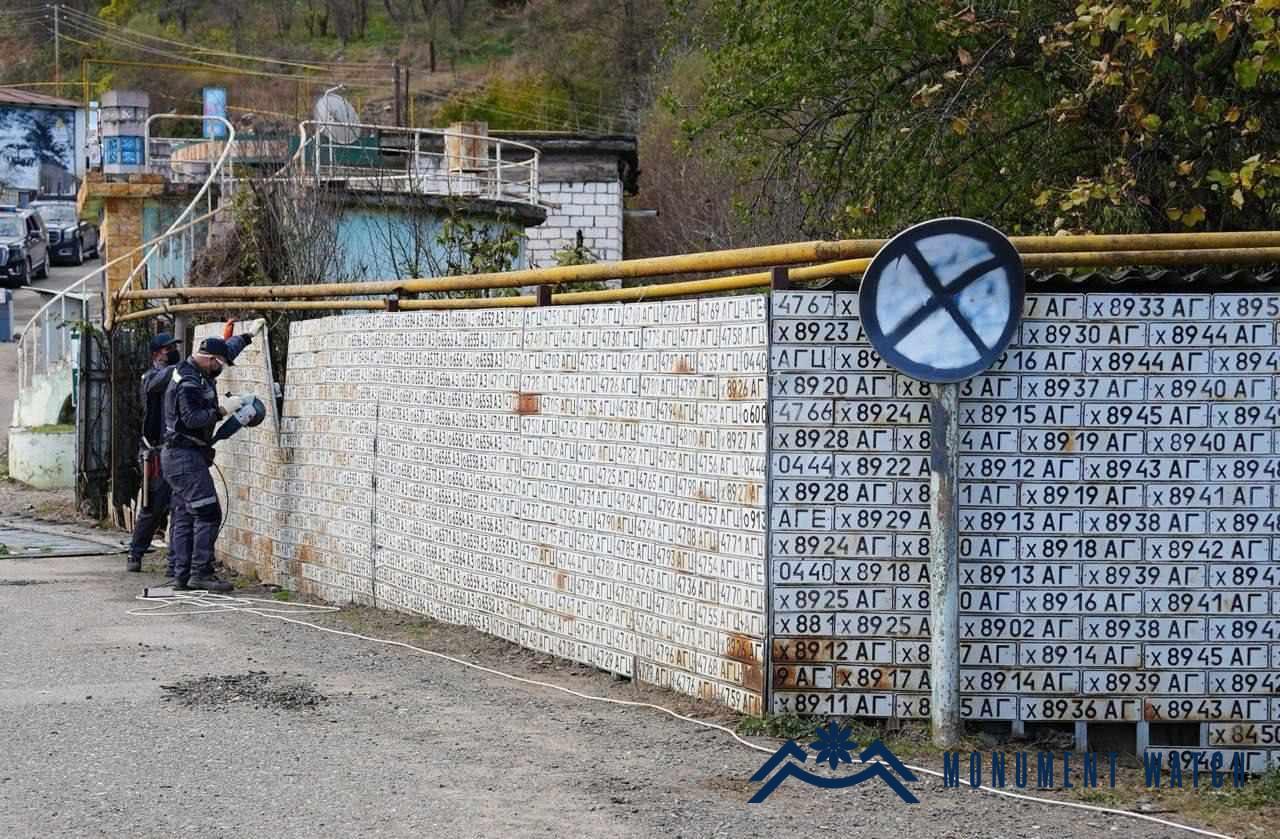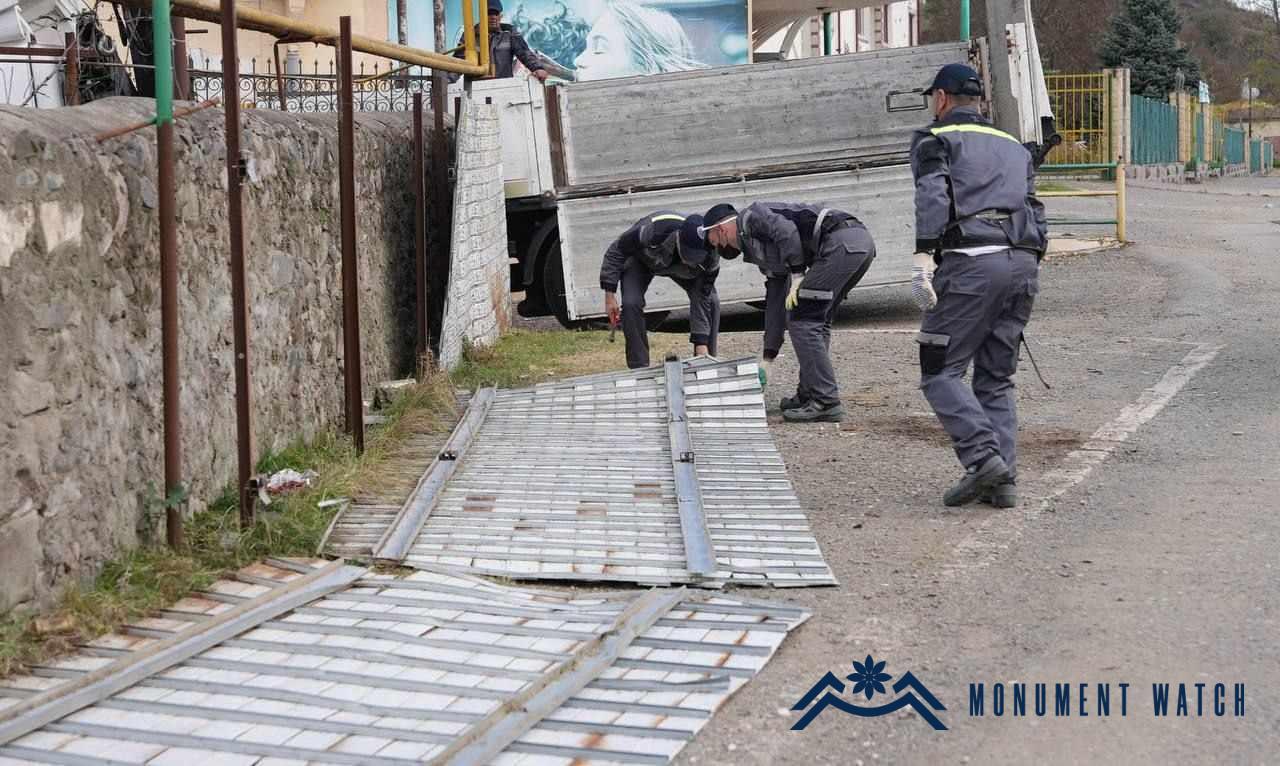The wall of license plates in Vank village demolished by presidential order in Azerbaijan
After the military operations of September 19, 2023, Azerbaijan initiated a policy targeting the destruction of monuments symbolizing or built during the years of independence.
On November 7, 2023, following a visit to the occupied Martakert monastery village of Artsakh with his wife and son, the President of Azerbaijan issued a direct order for the demolition of a structure emblematic of Artsakh's independence—the wall adorned with Azerbaijani car license plates (https://t.me/Caucasian_bureau/68089?single&fbclid=IwAR1SAqunl50k88D7h87KvmQYENgarUtZmrjz0kPfUjf7eEzJJfArhBvheGY). The wall was constructed using license plates from civilian and military vehicles abandoned by the adversary in the territories liberated by the Armenian side during the Artsakh war (Figs. 1, 2).
Following the destruction of the wall, accompanied by Azerbaijani flags, they displayed a wall made from license plates of Armenian cars in Stepanakert Square (Fig. 3).
Our response
The demolition of the wall in the village of Vank is an action designed to erase the memory of victory by Azerbaijan, representing an attempt to eradicate all the artifacts that hold memories of the Armenians' victory. The endorsement of such an action by the highest-ranking official of the country underscores a clear state policy aimed at erasing symbols of Artsakh's independence.
Article 9 of the Second Protocol of 1999 to the 1954 Hague Convention for the Protection of Cultural Values in the Event of Armed Conflict explicitly prohibits acts of destruction of cultural property in areas under the control of an adversary during armed conflict (https://www.unesco.org/en/legal-affairs/second-protocol-hague-convention-1954-protection-cultural-property-event-armed-conflict).
Article 8 of the International Criminal Court deems the destruction of cultural heritage in occupied territories an international war crime. The article stipulates, "It is forbidden to intentionally direct attacks on structures dedicated to religion, education, art, science, or charity, historical monuments, hospitals unless they are military targets” (https://www.icc-cpi.int/sites/default/files/RS-Eng.pdf).


